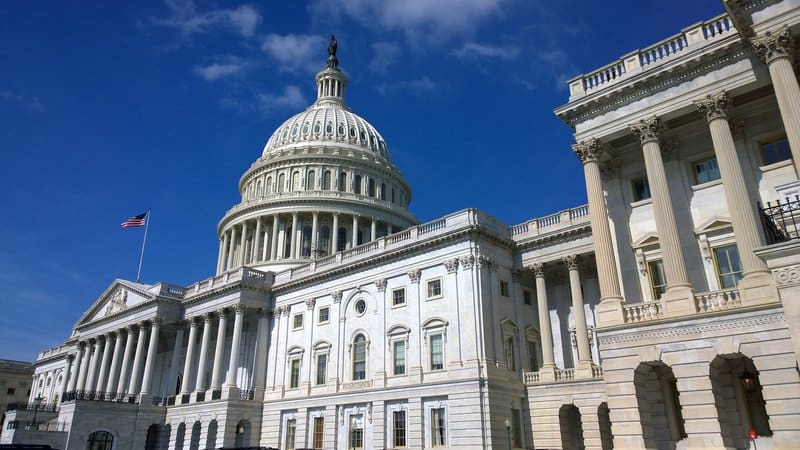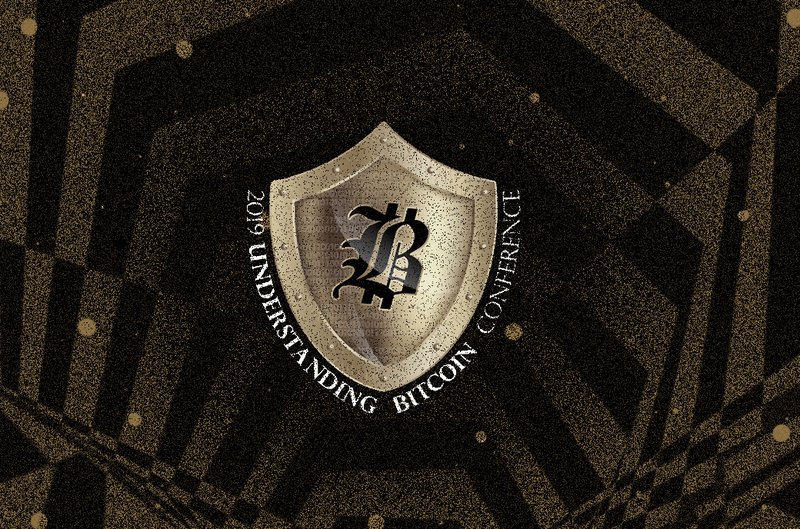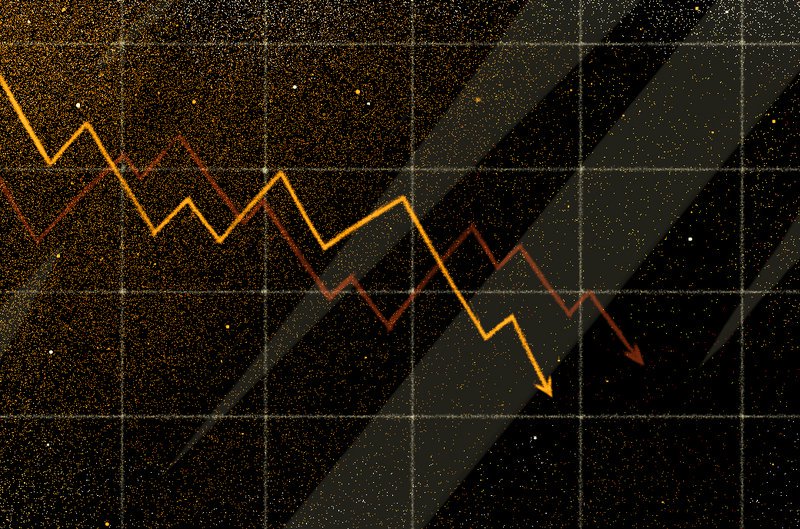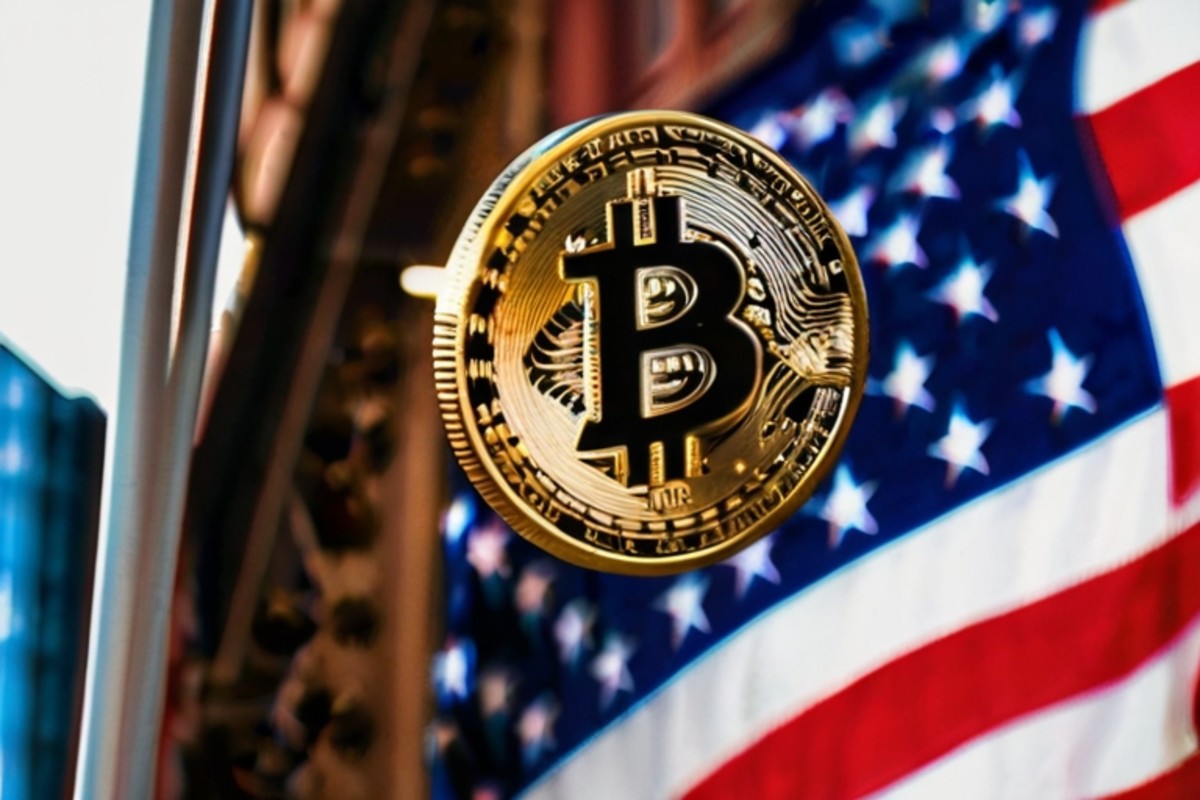Bitcoin Is Venice: What Medici Patience Can Teach Us Today
Like the Medicis of Renaissance Venice, those who embrace Bitcoin will be incentivized to create long-lasting impact.

This article is part of a series of adapted excerpts from “Bitcoin Is Venice” by Allen Farrington and Sacha Meyers, which is available for purchase on Bitcoin Magazine’s store now.
You can find the other articles in the series here.
“There is nothing new except what has been forgotten.”
–Marie Antoinette
We think there is merit in looking to history to explore the landscape of capital of all forms in a time and place in which investment was taken seriously — not just as a financial exercise, but as the natural result of spiritual and communal health. In both the flourishing of artistic output and the embrace of the Commercial Revolution on which this output rested, Renaissance Florence is an ideal candidate, as Roger Scruton would likely have appreciated.
Commerce laid at the heart of Florence’s rise out of the Middle Ages, and the city’s mock republican institutions granted it relative stability, a necessary precondition to capital accumulation. Although property rights were not beyond the meddling of the richest families going after their rivals, as a whole, the Florentine system provided merchants with protection from each other at home and from others abroad. In stark contrast with its medieval history, Florence had come to be ruled by a class of people interested in commercial profits rather than land conquest. Force would serve commerce by safeguarding property, ensuring contracts and keeping trade routes open. Gone were the days of aristocratic families feuding for the control of arable land. The symbol of this new system was Florentine currency, the florin. As Paul Strathern explains:
“Florence’s banking supremacy, and the trustworthiness of its bankers, led to the city’s currency becoming an institution. As early as 1252 Florence had issued the fiorino d’oro, containing fifty-four grains of gold, which became known as the florin. Owing to its unchanging gold content (a rarity in coins of the period), and its use by Florentine bankers, the florin became accepted during the fourteenth century as a standard currency throughout Europe.”
Richard Goldthwaite pinpoints the interrelation of the beautiful architecture, cultural flourishing and economic success, writing in “The Economy Of Renaissance Florence”:
“The best evidence for the success of the economy, however, is its physical manifestations at the time, and these are as dramatic as such things can be. In 1252 Florence struck its first gold florin, and by the end of the century the florin was the universal money in international commercial and financial markets throughout western Europe… In 1296 a new cathedral was projected, and when, after two subsequent decisions to increase its size, it was dedicated on the completion of its great copula in 1436, it was the largest cathedral, and perhaps the largest church of any kind, in Europe. In 1299 work began on the city’s great public hall, which has been called one of the most original buildings in medieval Italy. The standard international money of the time, one of the largest sets of walls of any European city, what was to become the largest cathedral in Christendom, and a massive and original seat of government were not insignificant indicators of the success of the Florentine economy at the time when both Dante and Giotto were on the scene.”
From this growth in commerce arose banks. Merchants trading goods across Europe were in control of evermore assets. In exactly the sense described by Hernando de Soto, the legal framework upheld by the Florentines — and such fellow northern Italian merchant city states as Venice, Pisa, Genoa and Siena — allowed mere assets to be put to work as capital. Banking families like the Medici often started in a trade, like wool, and provided competing merchants with working capital. Banking was therefore not a purely financial business. It remained firmly rooted in enterprise. Florentine bankers were first and foremost merchants who understood what it took to run a business.
Among the great banking families of late medieval and Renaissance Florence and even perhaps Italy, none shine so bright as the Medici. And yet, the three great Florentine families of the 14th century, the Acciaiuoli, Bardi and Peruzzi, once controlled more extensive and richer banks than the Medici ever did. Neither were the Medici particularly innovative bankers. According to Strathern, the Medici were in fact conservative in their enterprise:
“Giovanni di Bicci was a cautious man and preferred to consolidate. This was a trait he shared with his predecessor as head of the Medici clan, his distant relative Vieri, and he certainly passed it on to his son; as bankers, the Medici made their money through caution and efficiency, rather than innovation. Contrary to banking lore, they did not invent the bill of exchange, though they may have had a hand in the invention of the holding company; their success was based almost exclusively on the use of tried-and-trusted techniques pioneered by others. The Medici Bank never underwent rapid expansion, and even at its height was not as extensive as any of the three great Florentine banks of the previous century.”
And yet, financial success or innovation is not why the Medici name echoed through the centuries. The Medici were successful bankers, of course. They made a fortune from the European wool trade, with branches as far from home as London and Bruges. Their control over both the Papal accounts and the alum trade, which had been monopolized by Rome, provided reliable profits shielded from competition. But the Medici legend was born from investing not in banking or even in commerce but in intangible cultural projects that would yield impossible-to-measure returns. Through patronage, the Medici would allocate capital, accumulated through meticulous and conservative banking activities, to ventures of which no accountant could make sense. And yet, the value the Medici created outlasts all that of the more financially successful Italian families.
Because Florentine bankers could rely on hard money to make sensible investments, they understood the simple truth behind accumulation of wealth. Their incentives were very simply not to maximize flow. We would argue that it is this deep intuitive understanding of wealth that led merchants, especially the Medici, to accumulate cultural capital through spending on the arts and sciences. In fact, as Strathern writes, the Medici invested in cultural capital because it was the hardest asset they knew:
“It had only been in his later years that Giovanni di Bicci had begun to understand that there was more to life than banking and its attendant risks. Money could be turned into the permanence of art by patronage, and in the exercise of this patronage one gained access to another world of timeless values, which appeared free from the corruption of the religious authorities, or the devious politics of power and banking.”
The Medici banked their financial capital into cultural capital that would outlive them all in beauty that remains useful centuries after any transiently commercial utility expired. As Cosimo de’ Medici said: “I know the ways of Florence, within fifty years we Medici will have been exiled, but my buildings will remain.”
In a way, Cosimo was too optimistic. The Medici were exiled within 30 years. But the buildings do remain, along with the Medici name. Brunelleschi’s dome, which tops Florence cathedral, and artists like Michelangelo and Leonardo da Vinci were at the very center of the Renaissance, which spread from Florence throughout Europe and then the world. All owe a debt of gratitude to the Medici.
Robert S. Lopez characterizes this outstanding social and cultural effect that spread forth from Florence and Venice in the final few paragraphs of “The Commercial Revolution Of The Middle Ages, 950–1350”, writing:
“No doubt there were many people who complained that alien moneylenders came ‘with nothing but a pen and an inkpot’ to write down the advances made out to kings or peasants in the form of simple vouchers, and in return for such scribblings eventually carried off the material wealth of the land. But the merchants also wrote books in large number. It is no small token of their ascendancy in the thirteenth and early fourteenth century that the most widely copied and read book was that of Marco Polo, where practical information on markets interlards the romance of travel, and that the greatest poem of the entire Middle Ages was written by a registered if not very active member of the Florentine guild of spice-sellers, Dante Alighieri. The merchants also built town halls, arsenals, hospitals, and cathedrals. When the Great Plague struck, Siena had just begun work on an extension of her enchanting Duomo, so that it would outdo the cathedral of her neighbors and commercial rivals in Florence.”
Beyond Medici generosity was a deep understanding of investing. Despite cultural benefits not being as cleanly measurable as financial returns, bankers like Cosimo de’ Medici knew how to get the best out of capricious artists. According to Strathern, “Cosimo may have been conservative in his banking practice, and may have consciously conducted himself in a modest and retiring fashion, yet surprisingly he was capable of tolerating the most extravagant behaviour amongst his protégés.”
As Cosimo himself once said: “One must treat these people of extraordinary genius as if they were celestial spirits, not as if they are beasts of burden.”
The risk profile of cultural investment is rather more reminiscent of venture capital than it is the relatively stolid project of merchant banking: Many will fail, but some might succeed beyond your wildest expectations. Embracing the asymmetry of outcomes is key to success.
It is by allying both conservative lending with supportive patronage that the Medici managed to accumulate first financial and then cultural capital like few before or since. For that reason, the three great Medici — Giovanni di Bicci, Cosimo de’ Medici and Lorenzo the Magnificent — stand as exemplar cultural capitalists, the first two being also shrewd financial capitalists. They mobilized private capital to foster an environment of exceptional cultural creativity. Strathern encapsulates perfectly the Medici genius:
“The new art may have required science, but it also required money, and this was largely provided by Cosimo, who according to one admiring historian ‘appeared determined to transform medieval Florence into an entirely new Renaissance city.’ This was hardly an exaggeration, for Cosimo funded the construction, or renovation, of buildings ranging from palaces to libraries, churches to monasteries. When his grandson Lorzen the Magnificent examined the books many years later he was flabbergasted at the amounts that Cosimo had sunk into these schemes; the accounts would reveal that between 1434 and 1471 a staggering 663,755 gold florins had been spent… Such a sum is difficult to put into context; suffice to say that just over a century beforehand the entire assets of the great Peruzzi Bank at its height, accumulated in branches all over western Europe and ranging beyond to Cyprus and Beirut, were the equivalent of 103,000 gold florins.
“Yet such munificence was always built on a foundation of solid banking practice. An examination of the Medici Bank records shows that while it made use of the most efficient financial instruments available, it was in no way innovative in its practices; it was if anything highly conservative compared with other similar institutions. Neither Giovanni di Bicci nor Cosimo de’ Medici introduced any novel methods or ways of doing business, their practice being based entirely on the efficient and prudent use of proven methods pioneered by others.”
It may seem odd to argue for the health of a renaissance society as compared to the relative poverty of our own, especially in light of improvements in just about every sensible metric of human flourishing in line with increased harnessing of energy following the Industrial Revolution. But our assessment of health and poverty is really more about attitude than outcome.
We cannot help the size of the stock we inherit from our forebears; we can only decide what to do with it and how to aim to pass it on in turn. The imperative to decide is rooted across all stocks of capital in the scarcity of time and energy and so our attitude towards scarcity itself is at the root of what will become of economic, social and cultural capital alike. The degenerate fiat attitude has been to optimize for efficiency, and the results on all forms of capital have been nothing short of catastrophic.
Jane Jacobs forcefully makes this point in the ominously titled, “Dark Age Ahead,” writing:
“Perhaps the greatest folly possible for a culture is to try to pass itself on by using principles of efficiency. When a culture is rich enough and inherently complex enough to afford redundancy of nurturers, but eliminates them as an extravagance or loses their cultural services through heedlessness of what is being lost, the consequence is self-inflicted cultural genocide. Then watch the vicious spirals go into action.”
The nervous celebration of politically-correct mumbling idiocy is but one consequence of the cultural genocide of which Jacobs warned. It is a consequence of impatience and resentment, and of a rejection of the principles the Medici embraced, that the creation of cultural capital is the soundest investment of all. For what is its “return”? What is its “risk profile”? Finding and funding a Brunelleschi might be a one in a thousand or one in a million shot.
It may take decades to pay off as the talent is cultivated to the point of the possibility of conceivable repayment of the principal, should such a dubious calculation even be deemed worthwhile. Shock, on the other hand, is instant and guaranteed. Any talentless hack can shock an audience expecting merit by aggressively failing to produce any. And what of the character traits instilled by such relentless, resentful, impatient, disingenuous, living-by-lies garbage? What can we expect to be the consequences of abandoning the difficulty of the search for social truth for the ease of oppressive isolation? What of the consequences for mental health? Will we produce strong men and women, able to face the fundamental uncertainty of life armed with the ability to generate practical knowledge? Will we produce robust communities and civic spirit? Will we produce truth, goodness or beauty? Will we produce knowledge?
No, we will not.
We will produce narcissists; easily manipulated by greed and fear, prone to solipsism, irrationality, dependence, fragility and panic, whose incentives are so warped as to make duplicitous selfishness a necessity of social navigation and survival; optimized for strip mining capital and not much else; who will turn around and march through institutions nominally dedicated to the nurture, replenishment and growth of some or other form of capital, hijacking and repurposing them into broadcasters of narcissism. In “The Culture Of Narcissism,” Christopher Lasch predicted as much:
“Institutions of cultural transmission (school, church, family), which might have been expected to counter the narcissistic trend of our culture, have instead been shaped in its image, while a growing body of progressive theory justifies this capitulation on the ground that such institutions best serve society when they provide a mirror reflection of it. The downward drift of public education accordingly continues: the steady dilution of intellectual standards in the name of relevance and other progressive slogans; the abandonment of foreign languages; the abandonment of history in favor of ‘social problems’; and a general retreat from intellectual discipline of any kind, often necessitated by the need for more rudimentary forms of discipline in order to maintain minimal standards of safety.”
Rejection of great art and literature — whether on the grounds of “bourgeois sentimentality” in one era, fashionably ironic cynicism in another, “irrelevance” and the favoring of “social problems” in another still — is hardly different to confiscation of physical capital: It severs a tie with the past and makes us unable to learn from the cumulative experience of our communities. It renders us simultaneously dependent and alone. The real tragedy of the political appropriation of productive capital is not so much the violence of the theft, but the aborted yield that might have flowed from the asset because control is transferred to those who have no idea what they are doing. They lack the knowledge and competence to even replenish the capital, never mind to continue to harvest its output.
This separation of control and knowledge; the destruction of patiently stored time; the disbarment of the will to risk and to sacrifice in order to build, will cause a harrowing parallel to a collapsing debt spiral: a collapsing spiral of the knowledge of how to do things. We will need to rediscover them. Doing so will not be pleasant.
The same will go for literature and art: We will end up with a culture that simply, tragically doesn’t know anything. Yet, composed of human beings as it is, it will still face every need that literature and art fulfill, and so it will have to improvise impoverished simulacra in lieu of the real thing. In one of the most striking moments in Scruton’s “Why Beauty Matters,” he interviews Alexander Stoddart, the celebrated sculptor whose monuments of such Scottish intellectual giants as David Hume, Adam Smith, William Playfair and James Clerk Maxwell beautifully adorn the streets of Edinburgh. Stoddart describes:
“Many students come to me from sculpture departments — secretly of course — because they don’t want to tell their tutors that they’ve come to truck with the enemy. And they say, ‘I tried to make a model figure, and I modeled it in clay, and then the tutor came up and told me to cut it in half and dump some diarrhea on top of it, and that will make it interesting.’”
Scruton concurs: “It’s what I feel about the kind of standardized desecration that passes for art these days — it actually is a kind of immorality because it is an attempt to obliterate meaning from the human form.”
And Stoddart fiercely fires back, “Well, it’s an attempt to obliterate knowledge.”
The production of culture that results will be predictably immature and shallow because we have made ourselves unconscious of history and have severed the link to what has already been learned. In a podcast, Wynton Marsalis answers Jonathan Capehart’s question as to whether it is fair to call him a “race man” as well as a “Jazz man” by saying, “Yeah, it’s fair.” Capehart asks him to “define it,” and Marsalis responds:
“I think it’s a person who has pride in whatever their subculture or subgroup is, in this case Black American. It doesn’t mean you’re against other people but you’re conscious of the history of your subculture and you embrace it, you believe it, and you don’t mind speaking on it.”
We believe Lin-Manuel Miranda to be a contemporary master of a proud and celebratory embrace of subcultural ethnicity and, resultantly, an art that straddles the isolation of feigning color blindness and the oppression of imposing racialism. His work is outstanding cultural capitalism. His best-known musical, “Hamilton,” draws on and reimagines the common founding myth using the newer language of hip-hop and newer reality of American ethnic diversity. The result is a truly inclusive piece of art that invites all to join and provides a new lens of understanding. It is challenging but respectful. It is intimately aware of its canon — not only literary but social and cultural — yet it finds a novel combination of expression, so original and powerful as to extend the canon’s meaning.
“In The Heights” goes even further in its implicit celebration of Americana and may well be the most subtly yet unabashedly pro-American work of art of which we are aware. The musical, also recently adapted into a film, blends a celebration of Dominican and more broadly Latin-American culture with acute commentary on racial grievances, and yet entirely eschews resentment and segregation. The message is unequivocally that the infusion into the mainstream of Latin-American culture improves American culture as a whole for everybody. Echoing Martin Luther King, Jr., the more positively and organically this happens, the better. Central imposition on the grounds of resentment will in turn cause only equal and opposite resentment, and besides is insulting to the intrinsic merits of the culture being championed. The journey of several characters is marked by the transition in their cultural self-identification from bitterness and opposition to confidence and celebration; we might say, from derision to creation.
“In The Heights” goes to pains to testify that this culture (for all culture is local and specific) is, at its social and spiritual core, as American as they come. It is rooted in hard work and sacrifice, embrace of opportunity, and love for community and respect for its culture and its literature. The matriarch Abuela Claudia’s beautiful solo song, “Pacienza Y Fe,” embodies the ethic of the musical: patience and faith. Long-termism, commitment and a rejection of cynicism. Conscientiousness, reverence and responsibility. There is surely no more intimate and committed an integration than the naming of one’s child after an element of the host society — no less an element integral to the experience of immigration, as main character Usnavi is, named after his parents’ misreading of a U.S. Navy ship they passed as they first arrived in America. Playing on “power” as in either electricity or societal influence, Usnavi encourages his community members during a power cut:
“All right we’re powerless, so light up a candle.
“There’s nothin’ goin’ on here that we can’t handle.”
We could hardly come up with a better slogan of localism, experimentation and bottom-up social coordination if we tried. “In The Heights” is good. It is artistically good, but more importantly it is morally good. Miranda is among the greatest cultural capitalists of our time.
This is a guest post by Allen Farrington and Sacha Meyers. Opinions expressed are entirely their own and do not necessarily reflect those of BTC Inc or Bitcoin Magazine.









